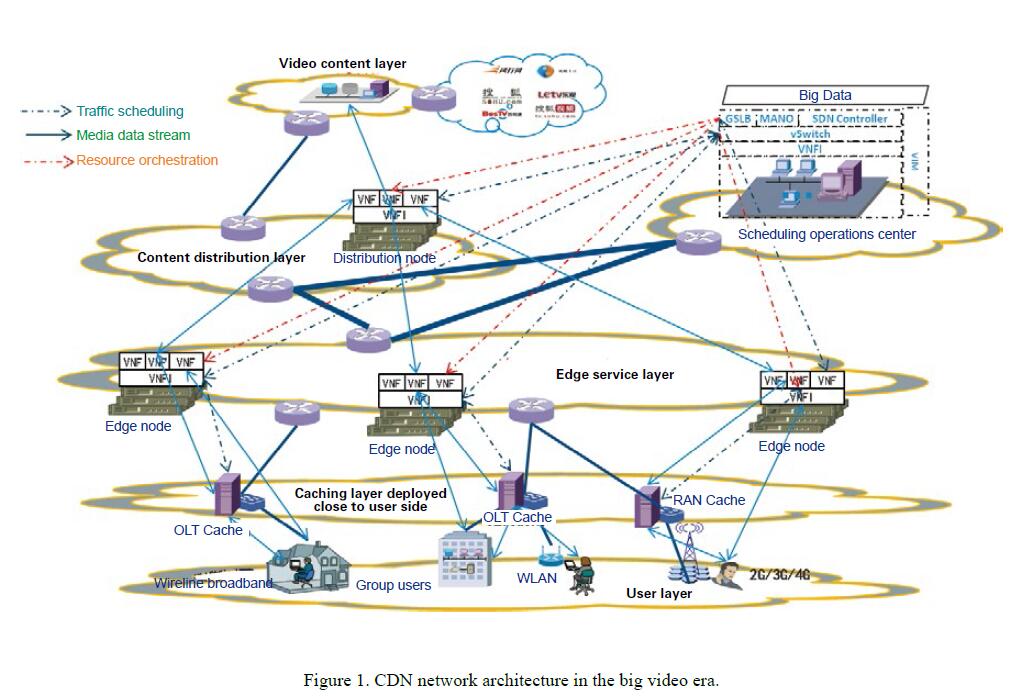Promising CDN in the Big Video Era
No products or services can survive without focusing on user requirements. Smartphones and internet services are no exception. They are evolving to continually meet user needs. Although user needs are varied, studies find that implementation of any user need starts with information acquisition, followed by logical analysis and R&D activities. This process then repeats until the expected outcomes are met or no further actions can be made.
According to information theory, the more information you get, the better you will act, to be exact, comprehensive information makes estimation more accurate, actions more efficient, and users more satisfied. At present, information is represented in text, image, and video. Although all of them can provide the same amount of information, the efficiency users receive them is quite different. Video is the most effective and will become a major way of providing information for users. Video-based services will also gradually replace text- and image-based services to dominate the market.
ZTE has proposed big video—an integrated solution developed to meet user demands for videos in the future. The solution provides video services that feature six “bigs”—big traffic, big storage, big computing, big network, big data, and big ecosystem.
A content distribution network (CDN) serves as a key part of the big video solution that can guarantee video experience of users. User experience reflects how well and how fast users acquire information and implement actions for self-fulfillment. The CDN plays a vital role in improving user experience in big video services.
The definition of future video footage will be inevitably close to a real world, especially when virtual reality (VR) services requiring higher definition and fidelity are widely used. Although the compression technology continues to advance, the overall video streams are still growing dramatically. Moreover, as more services are provided in videos, the number of concurrent HD video streams also increases rapidly. All these present a huge challenge to the bandwidth of underlying networks especially the convergence and core networks. In the big video solution, the CDN devices for content caching are deployed near the user end to reduce the pressure of big traffic on the underlying networks and cut down network capex while guaranteeing user experience. Like in a mobile network, with the rise of the big video data rate, these CDN devices will be further split and deployed close to the user side and may eventually manage the user’s home gateway.
In the future, video-based internet services will experience an explosive growth, along with a surge in video content that requires at least EB-scale storage space. To improve storage efficiency and lower storage costs, the existing CDN simple-caching pattern will co-work with distributed cloud storage. Specifically, hot content will still be cached on the CDN while other non-hot content will be stored on the cloud. Of course, content, whether it is hot or not, varies with time, and its storage will be migrated between the CDN and the cloud.
Big Computing
Video-based services are computationally expensive in terms of scene processing. A traditional CDN is an IO-intensive system focusing on service data caching, and does not require a high CPU speed. However, this will no longer be the case in the big video era, where the CDN will gradually evolve to an edge computing system. In addition, to serve different services, the CDN will be deployed on virtualized middleware to act as a real distributed cloud system. This system will carry out scheduling strategies based on services rather than on user requests, and will dynamically allocate computing resources as required by services.
In the era of ubiquitous connections, both the existing access (wireline and wireless), convergence, backbone and core networks, and the burgeoning IoT and quantum communications networks will carry video-dominant traffic. Because of its service perception capability, the CDN, an overlay network built on the above networks, will ride on the SDN technology to function as the control layer of underlying networks. The control policies must be based on services; otherwise, network control will be of little use. As the CDN acts as the access point to content services, it is sensitive to service changes and can enable the controller to re-arrange the resources of underlying networks accordingly.
The CDN relies on big data to make all policies, which involve deploying CDN cache devices close to users, migrating hot and non-hot content between the CDN and cloud, allocating computing resources among services, and controlling network resources for services. Big data is regarded as the nerve center of all policies and makes them as an organic whole to give full play to the CDN.
In the big video era, the CDN will expand its industry chain, evolving from the underlying network platform to a service platform. Although such expansion is limited and cannot cover all services or applications, the CDN does have its place in advertising—currently a major service on the internet. This works because big video can efficiently provide information, parse and process video scenes, and analyze user behaviors to help advertisers place ads into proper video streams based on user preferences and habits.
To achieve all the promising features discussed above, the CDN requires a powerful network architecture to reach its full potential. Figure 1 illustrates the CDN network architecture in the big video era.

The big video solution is an effective approach to serve users in the future, and its essence is big traffic, big storage, big computing, big network, big data, and big ecosystem. As the key element of the solution, the CDN will play an indispensable role in supporting the six “bigs”.